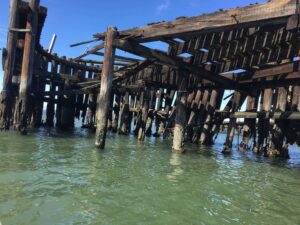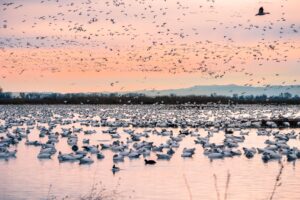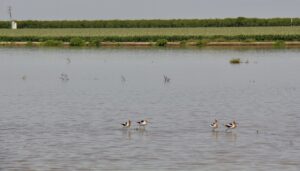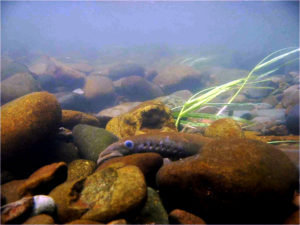All that springtime rain may seem a distant memory now, but the record still holds: San Francisco had the rainiest March on record, and the city’s season-to-date rainfall is 12 inches above the norm of 22 inches. What effect did all those relentless storms have on the Bay Area’s flora and fauna? Bay Nature asked several naturalists.
In the South Bay, three feet of water flooded the Coyote Creek Field Station. Biologist Gina Barton and her volunteer assistants, who usually band birds near the station every few days, couldn’t do so for a week. Barton said that song sparrows, common yellowthroats, and other birds that build nests close to the ground had likely already started building their nests when they were flooded out. When the water receded, the birds simply built new nests, making the fledging season a bit later than usual. However, PRBO Conservation Science naturalist Rich Stallcup says that birds that feed insects to their young—like warblers, vireos, and flycatchers—will do well and have better reproductive success because there will be more to eat.
Some birds were undeterred even by the heaviest rains. “In the third week of March I saw a red-shouldered hawk building a nest in a downpour,” says Stallcup, “and in Bear Valley I watched great blue herons building stick nests 140 feet high in a Douglas fir against 50 knots of a northwest wind.”
- Photo by Jim Steinert.
Steve Edwards, the director of the Regional Parks Botanic Garden, said that exotic annual grasses grew very quickly and overwhelmed the annual wildflowers in many East Bay grassland habitats. But poor wildflower showings weren’t the case at Jepson Prairie’s vernal pools in Solano County. Docent Kate Mawdsley said that in 20 years of volunteering at Jepson she had never seen such profuse pools of Downingia ringed with Lasthenia: “It was so spectacular that I could hardly stand it!”
In Muir Woods’ Redwood Creek, fishery biologist Michael Reichmuth had a difficult time with fish counts earlier in the year due to high flows and low visibility from high sediment levels. But he had a nice surprise in May during his coho salmon smolt counts: “I was worried that most of the overwintering juvenile coho had been permanently flushed out to sea during the rains, but Redwood Creek had the highest smolt count thus far with 487 coho smolts captured in early May.”
This spring’s heavy rains also meant fat times for invasive weeds all over the region. The state’s 40 Weed Management Areas have been critical players in the battle to keep invasives in check, said Doug Johnson of the California Invasive Plant Council.
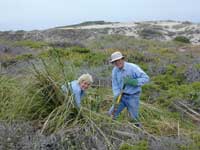
- Photo courtesy Pescadero Conservation Alliance.
This year’s annual Invasive Weed Awareness Week, from July 17 to July 23, marks a milestone for the weed districts: The state Assembly and Senate allotted $2.5 million in new funding for them. Johnson anticipated final approval by July 1, and he hopes future budgets maintain that support every year.
“Consistent funding is really the key to invasive plant eradication,” says John Wade, of the Pescadero Conservation Alliance, which has worked to remove pampas grass on the San Mateo Coast. “If we get to the grass now, it is actually something we can nearly eradicate on the south coast.”
The money will also fund public education programs like one in Marin County aimed at curtailing sales of invasive plants for landscaping. For more information and to find out about activities in your area, go to www.cal-ipc.org.

.jpg)

